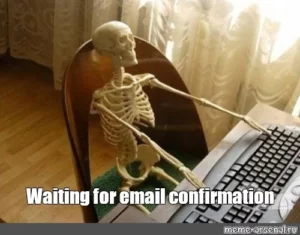
Imagine this spooky scenario: You’ve spent weeks connecting with a leading website, discussing a potential collaboration. The dialogue starts strong; there’s mutual interest, emails are exchanged, and shared goals are outlined. Your heart pounds with excitement. But just when it feels like you’re on the brink of a promising partnership, the communication goes cold. The media platform, once so responsive, falls silent, and you can’t help but feel the sting of frustration.
This situation is all too familiar in the link-building world, known as “media ghosting.” While it’s disheartening, it’s crucial to recognize that such communication lapses aren’t always a reflection of your pitch or efforts. Given that websites and blogs receive countless offers daily, even the most compelling pitches can sometimes be overlooked or set aside.
This guide aims to help you navigate these quiet periods, offering strategies to re-engage media contacts and ensure your outreach remains effective.
Steps to Take When A Media Contact Goes Quiet
1. Understand the Reasons Behind Ghosting
Before making assumptions about silence, it’s essential to realize it’s not always a flaw in your outreach message causing quietness. Understanding the possible reasons is crucial as your next actions and approach will largely hinge on this understanding. Here are two common reasons to consider.
- Bad Timing and Busy Schedules: Media professionals, from content managers to website administrators, often juggle many tasks and tight deadlines. Your pitch might have taken a backseat due to other urgent tasks.
- Unexpected Life Events: Everyone faces surprises in their daily lives, from sudden illnesses to personal emergencies. The person you’re communicating with might have put work on hold for a bit.
Empathy matters – remember there’s a person behind every email or message. They might be silent due to reasons unrelated to your proposal. Being understanding can help maintain a positive relationship for future interactions.
2. Review Your Last Communication
It’s always wise to revisit the last message you sent. Was your point clear and to the point? Remember, straightforward messages often garner better responses. Reflect on the tasks or questions you posed in your email.
Did you make it easy for them to reply? Questions that can be answered with a simple “YES” or “NO” often work well, as they reduce the cognitive load on the recipient and make it more likely for them to respond swiftly.

Additionally, consider the tone and content of your message. Were you perhaps too aggressive or pushy, potentially irking them? Did your proposal or offer sound too outlandish or unbelievable? Recognizing these factors and understanding the sentiment of their last reply can provide valuable insights. Adjusting your approach based on this reflection can increase the likelihood of a more positive engagement in the future.
3. Space Out Your Follow-Ups
Resisting the urge to send numerous follow-ups in a short span is essential. If a media contact goes silent, avoid the temptation to inundate them with repeated “Do you have any updates” or “checking in” emails. Instead, allow them a few days to catch up on their tasks and responsibilities.
When you feel it’s appropriate to send a reminder, ensure it’s tailored and relevant to your previous discussions. Here’s an example.
“Hello [Name],
I’ve been thinking about our recent conversation regarding a potential guest post on [specific topic or article idea]. I’ve gathered some fresh insights that I believe would resonate with your audience. If your schedule has become too packed or if there are other pressing priorities, I completely understand. I’d just love to hear your thoughts whenever convenient.
Thanks so much for considering!”
By adopting this approach, you communicate patience, understanding, and adaptability, rather than putting undue pressure on them.
4. Refresh Your Pitch
To stand out in a crowded inbox, it’s essential to keep your pitch relevant and engaging. If your initial pitch didn’t get the traction you hoped for, consider revisiting and refreshing it. This doesn’t necessarily mean starting from scratch but adding elements that could capture the media platform’s attention more effectively.
One way to reignite interest is by offering a fresh perspective or introducing new, compelling data. Perhaps there have been recent developments in the topic you’re discussing, or new research has emerged that can bolster your proposal’s value. Incorporating these updates can signal to the media platform that you’re proactive and keenly aware of current trends.
Another invaluable approach is creating a survey tailored to your niche or industry. Gathering data directly from consumers or professionals in the field can provide unique insights. Using this data, you can craft data-driven stories that are both relevant and captivating. These stories are often favored by media platforms as they provide tangible evidence and resonate well with readers.
To further enhance your pitch, think about incorporating a distinctive element that distinguishes it from others. Perhaps seek the insights of a colleague or even your CEO for their expert opinion or unique take on the subject. Their perspective not only adds credibility but can also boost brand recognition. This could be complemented with an exclusive interview or a piece of content that’s fresh and hasn’t seen the light of day elsewhere.
Lastly, ensure your revised pitch is still aligned with the platform’s content goals and audience. Tailoring your proposal to their specific needs and interests will always increase the chances of a favorable response.
5. Monitor Their Online Activity
Staying updated on the activities of your media contacts is a savvy way to keep the relationship alive and relevant. It’s essential to strike a balance between being informed and respecting privacy. Remember, the aim isn’t to pry but to stay updated in a non-intrusive manner.
Social Media Channels: Regularly browse through the professional profiles of your contacts. Platforms like LinkedIn or X (formerly Twitter) can provide insights into what they’ve been sharing and discussing, or even if they’ve mentioned any recent challenges. Their posts might offer a clue about their current focus, or if they’re open to new pitches or collaborations.
Send a Follow-Up Through a Different Communication Channel: If your emails go unanswered, consider reaching out through another platform like LinkedIn. However, always ensure your approach isn’t creepy or overly persistent. It’s about showing adaptability and respect for their time and space.
Changes in Internal Team Structure: Media outlets, like any other business, undergo changes. These could be shifts in their content strategy, editorial calendar, or even staff. It’s crucial to be aware if your contact has moved to a different role or if there’s a new person handling your segment. A change in role might mean your previous pitches are no longer relevant to them, but it could also open up new opportunities with the incoming personnel.
6. Keep Emotions in Check and Add Appropriate Humor
In professional exchanges, especially when you’re trying to reconnect with media contacts who haven’t responded, it’s essential to keep a cool head. Your emails can still reflect your personality, and a bit of well-timed humor can go a long way. Consider including a light-hearted meme to inject some humor without coming across as impatient or rude.
Grasping the nuances of snarky humor is key. Snark involves a mix of sarcastic wit and a kind of cheeky disrespect. According to one definition,
“Snark is abusive and sarcastic speech or writing—a form of criticism that can be seen as either sharp-witted or just plain rude.”
In a positive light, a snarky comment might playfully acknowledge the wait without casting blame, like quipping, “Maybe my email is on vacation in your inbox?” It’s lighthearted and doesn’t point fingers.
But, be careful with negative snark because it can sound like you’re being passive-aggressive. Like if you say, “Did my email get lost on its way to you?” it might seem like you’re accusing them of ignoring you, and that could make things awkward.
When you’re crafting your follow-up, gauge the humor against the rapport you have with the recipient and what’s generally acceptable in your industry. Humor is a fine line, so if you’re unsure, it’s better to stay on the side of professionalism with a friendly tone.
7. Move on
Navigating the follow-up process can be stressful, and I speak from personal experience. There was a time when I diligently followed up with a contact for three months, only to be met with an unrelenting silence. It was disheartening; each email sent felt like a message in a bottle, drifting away into a digital ocean without a response.
That experience often brings me back to the lingering question: “When should you give up on a prospect?” While there’s no one-size-fits-all answer, it’s crucial to heed the signs. A string of unreturned messages, especially against the backdrop of pressing deadlines, signals it’s time to move on. Clinging to hope for a response from a silent contact risks missing out on other fruitful avenues.
However, it’s important to transition with a positive spirit. As a wise colleague, Konstantin once put it, “Move on, it’s okay—after all, it’s not the end of the world, no one died.” This light-hearted perspective serves as a gentle reminder that while our professional endeavors are important, they’re also a single part of a much larger journey.
Use the quiet from a non-responsive contact as a sign to regroup and refocus. Expand your network, polish your approach, and perhaps next time, your pitches will be met with more success. Keep the door open for future interactions—people and circumstances change, and the contact who’s silent today might be more receptive tomorrow.
Wrapping up
In conclusion, handling silence from media contacts is part of the link-building game. It’s a signal to re-evaluate your strategy and perhaps shift your focus. It’s important to keep a cool head, maintain professionalism, and know when it’s time to move on to other prospects. Remember, each unanswered email is a learning opportunity. Stay positive, keep refining your outreach, and stay on the lookout for new connections. Your persistence will pay off, and the right contact will respond at the right time. Keep pushing forward, and let the quiet moments motivate you to find even better opportunities.

